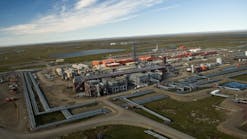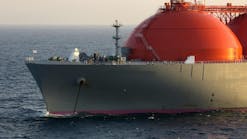The warning shot fired by the Norwegian Oil Industry Association (OLF) across the Ospar Convention's bow recently for the latter's desire to further tighten regulations governing discharges of oil-in-water might, at first glance, have seemed misguided in an increasingly environmentally aware industry. (Ospar [Oslo-Paris] is the European environment ministers' organization that deals with maritime pollution in the Northeast Atlantic.)
Interestingly, OLF-the representative body for Norwegian oil and gas sector companies-believes that new proposals on the handling of produced water being put forward by the Offshore Industry Committee, a group working under the Ospar aegis, will actually be a retrograde step in the campaign to protect the marine environment in the Northeast Atlantic.
Among the OIC's proposals 2 weeks ago at a meeting in Oslo is one suggesting current international limits on the discharge of dispersed oil in produced water be reduced to 30 mg/l. from 40 mg/l. Far from seeing this as an environmentally progressive step, however, OLF believes it would, in fact, be counterproductive.
A step backward
"A unilateral effort to reduce the oil concentration in produced water would be a step backward in the work on important environmental measures on the Norwegian Continental Shelf," stated Stale Johnsen, of the OLF's working group on discharges to sea. Johnsen said OLF believes that "a potential tightening of the requirement regarding oil in produced water is inconsistent with the goal that the oil and gas industry has committed itself to on the NCS, specifically, to achieve zero discharges that are harmful to the environment."
Placing the environmental spotlight solely on the issue of oil in produced water, says the OLF, distracts the industry from the potential harm caused by compounds other than oil being discharged offshore during operation. The focus, it argues, must be based first and foremost on an analysis of the environmental risk of discharges to sea.
Prioritization of measures
"The industry wants to base the measures on the impact various types of discharges have on the environment," the OLF said in a statement. "The goal is to achieve correct prioritization of measures, so that one can succeed in reducing the most harmful discharges rather than focusing only on oil in produced water."
"There are," the OLF notes, "several examples on the NCS that indicate that there are compounds other than dispersed oil that may have a greater impact on the environment."
According to Johnsen, whose full-time posting is in health, safety, and the environment at Statoil AS, the widespread use of process chemicals to dilute oil concentration in produced water, for one, may result in "an overall higher risk of harmful effects than discharge of water with a higher concentration of dispersed oil."
He stressed that the larger the resource devoted by industry to regulating discharges of oil in water, the less that will go to "other important environmental areas."
This is not to say that the array of technology being developed to curb environmental impact linked to discharges-such as treatment and purification, water shut-off, downhole separation and replacement of process chemicals-isn't growing by the day. Statoil recently announced a scheme at its Heidrun field in the Norwegian Sea to test the viability of reinjecting produced water underground.


